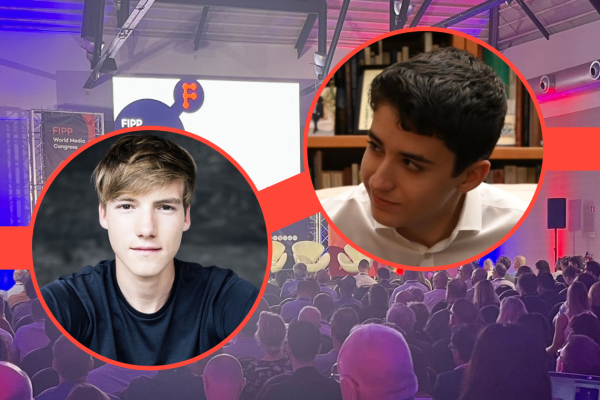Speaking to Gen Z with authenticity: lessons from Yoof Agency
In 2025, more than half the world’s population will be made up of Gen Z (born between 1997-2012) and Gen A (born between 2013-2020). With this statistic Pierre Caulliez and Martynas Vanagas, co-founders of Yoof Agency, opened their presentation about engaging younger audiences at FIPP World Media Congress.
“When we started working a few years ago, we often heard these things about Gen Z, or youth in general: ‘they’re not exactly our target audience’, ‘it’s too small’, ‘they don’t have the purchasing power’, etc.,” said Vanagas.
“But in two years, Gen Z and Gen Alpha will be more than 50 per cent of the world’s population. Now I really don’t know what could be more interesting than that.”
Gen Z content in focus: authentic, visual, interactive
The pair, who are both part of Gen Z, highlighted the plethora of technological milestones that have occured in their lifetimes: Netflix, video streaming platforms, Facebook, iPhone, Instagram. “This generation grew up with so many technological changes. They – we – are truly digital natives,” said Caulliez.
With Gen A digital life will be even more a part of their lives, given the popularity of TikTok, experiencing Covid-19 lockdowns and now Chat GPT and other AI.
“Two hours and 43 minutes is the average time a Gen Z-er spends on social media per day – Snapchat, Instagram, YouTube, and most importantly TikTok.”
How does Gen Z consume content? “Gen Z likes it short and funny,” said Caulliez. “They spend their time scrolling, so you’ve got to be interesting, appealing. You have to grab their attention straight away. Something shareable, relatable, and visual – they don’t have time to read long articles.”
The two also emphasised interactivity and authenticity as qualities appreciated by Gen Z. “They like to see the story of course, but if they can be part of it, even better.”
“We know ‘authenticity’ is a word that has been thrown around a lot, in marketing strategy meetings,” said Vanagas. “But for us, authenticity means having your own style.”
Examples include Dylan Page, the biggest news account on TikTok with 7m+ followers. “He shoots a 30-45 second video in his bedroom. Another example is Max Foster, a CNN correspondent in London. You can see him doing a video about what he learned today while working at CNN that day. His videos are just shot on a selfie camera.”
They then turned to a legacy media brand: the Washington Post. “Old dog, new tricks. Again, they’re just shooting videos on TikTok just covering the news topic of the day. So I remember the last thing I was watching with them was TikTok is banned in Montana. They shot a 45 second video, maybe 30 seconds, giving a quick recap. What’s going on with TikTok in Montana? And you could see what was happening behind the scenes at the Washington Post office. It feels very unique because you feel that connection with the brand. It’s a big media brand, but also something we relate to, and it’s very authentic.”
More than a market segment
Caulliez and Vanagas ended by summarising their advice to the audience. “The situation is that it’s very difficult to work with Gen Z in particular if we look at it as a market segment,” explained Vanagas. “Sure – you can classify it as a market segment. It is a demographic.
“But we believe – and our learnings show – that it’s much easier to find strategies that work if we are just following where they are. We saw they are on social media, so we have to follow suit. They like the tone this way. We have to follow suit. They are using this language. We have to follow suit.
“So basically, if you remember absolutely nothing from what we said here today, one thing we would like you to still walk away with is that you need to not think about ‘getting’ Gen Z or ‘attracting’ Gen Z. What we say to the people we work with is to think about evolving with this generation. Sure, it’s TikTok today, but it’s not gonna be TikTok in one year. If you keep evolving with this generation, while they’re scrolling in their infamous feed of information, they might just stop for one second and even go for your link.”
More from the FIPP Congress:
- Flexible and fearless: How the Vogue Ukraine team pulled together to keep publishing during the Russian invasion
- Lessons from MIT Technology Review’s digital transformation
- Shirish Kulkarni on the power of diversity and inclusion and how D&I drives innovation in media
- The art of creating a compelling political podcast: lessons from Zeit Online’s “Das Politikteil”










